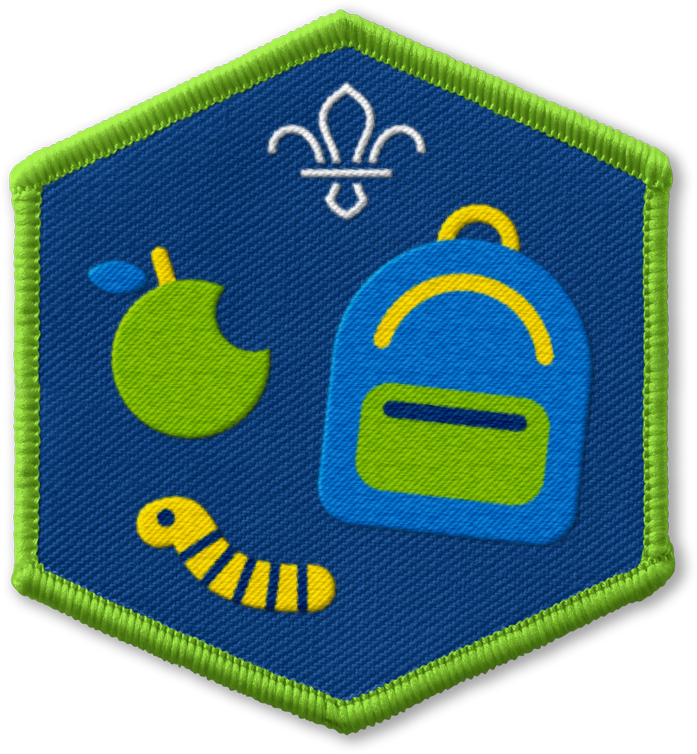You’ll need
- Low poundage bows
- Suction cup arrows
- Target board
- A way to mark shooting line
- Benches or chairs to wait on, away from the shooting area
- A way to record scores, such as a whiteboard
Before you begin
- Use the safety checklist to help you plan and risk assess your activity. Additional help to carry out your risk assessment, including examples can be found here. Don’t forget to make sure all young people and adults involved in the activity know how to take part safely.
- Make sure you’ll have enough adult helpers. You may need some parents and carers to help if you’re short on helpers.
What’s soft archery?
Soft archery uses equipment specifically designed to be led by activity leaders without any formal qualification, consisting of low poundage bows and rubber/sucker tip arrows. This does not include steel tip arrows. An archery permit is required for all archery activities taking place; except when using children’s toys or soft archery equipment specifically designed to be led by activity leaders without any formal qualification.
- Make sure the equipment used is in good condition and fit for purpose. Check the equipment is suitably insured and confirm what would happen if there was any damage. All equipment must be the right size for the user and in good condition.
- Consider the ability and experience of the participants and any disabilities, access needs or health conditions and plan the session accordingly.
- Make sure everyone is clearly briefed on the shooting procedure, where to stand when not shooting, how to retrieve their arrows and their behaviour.
- Have a designated shooting area and shooting line to help avoid accidents. Anyone who isn’t shooting must remain behind the shooting line and not at the side of the designated shooting area. Make sure targets are suitably spaced out, and never shoot at human or animal targets.
- Complete a site-specific risk assessment to make sure that it's suitable and safe and that no one can accidentally walk into the target area.
- Check all clothing and footwear worn is suitable. It should cover arms and legs and is in good condition.
- All archers must have finished shooting their arrows, before anyone can go and collect the arrows from the targets. Depending on young people’s ages, you may choose to have an adult be responsible for collecting all arrows when everyone has finished shooting, rather than asking young people to.
- Have a safe waiting area that’s suitably supervised for people to stay in while not shooting.
- Take a look at our guidance on archery activities.
Setting up this activity
- Place and space out the targets at one end of the meeting place.
- Set up a shooting line and waiting area at the other end of the meeting place. The shooting line should be at an appropriate distance to the targets, depending on the ability of your group. Make sure the waiting area is suitably supervised. You may want to have activities, such as card games, in the waiting area.
- Please the bows on the target line, opposite the targets, but keep the arrows safely out of reach of young people and secured until you’re ready to begin.
Run the activity
- Gather everyone together and explain you’ll be doing some soft archery.
- Ask everyone what they think they need to do stay safe while doing soft archery. Make sure to explain they should:
-
- Always point the bow towards the targets or the ground.
- Never point the bow at another person.
- Show to signal for help or an emergency – such as raising an empty hand in the air.
- Never move the bow and arrow round in the air while talking or loading the bow.
- Never enter the shooting area to retrieve arrows until told.
- Show how to approach the targets from the side and remove the targets (walking to the side of the target helps prevent you getting poked in the tummy by an arrow!).
- Always stay behind or on the shooting line.
- Never leave the waiting area until you're called forward.
- Ask everyone to get into groups. The number of targets that you have should determine group size, so everyone in the group can shoot at the same time. For example, if there are three targets, you’d have groups of three people.
- Choose a starting group and ask them to stand at the shooting line next to a bow.
- Everyone else should move to the waiting area.
- Place the arrows on the floor next to the bows.
- You may want to do a demonstration as you talk through what to do, before letting people try. You could have people individually load and shoot their first arrow, until everyone shows they know what they’re doing, then let the group fire their remaining arrows in their own time.
- Ask people to stand sideways on to the target, so they’re facing one side of the meeting space. One foot should be on the shooting line, with their feet shoulder width apart. The direction they stand depends on the hand they write with. Their writing hand/side should not be the one on the shooting line.
- Ask everyone to carefully pick up the bow with their non-writing hand and hold it horizontally.
- They should load the arrow by placing it on top of the bow and clicking it onto the string.
- When they’re ready, they should hold the bow up to the target. Next, place three fingers underneath the arrow on the string, turn the bow vertically and pull the string back.
- They should aim the arrow by looking down the arrow to the target. When they’re when ready, they should let go of the string to release the arrow. Repeat this and keep going until you have used up all your arrows.
- When you’ve finished, place the bow on the floor and wait for everyone else to finish.
- When all bows have been used, wait for the responsible adult, who’s running the activity, to tell you to go and collect your arrows. You can see how you did and make a note of your score.
- Now, return the arrows, swap groups and repeat until everyone has had a chance at the activity.
Reflection
This activity helped everyone try something new. Have you done soft archery before? How did you find it? Were there any tips which someone gave you which made it easier to hit the target?
This also gave you the chance to develop your coordination and focus. How did you find concentrating on the target and arrow? How did you focus on what you needed to remember to do the task? If you had you tried Archery before, how did you do things differently so that you hit the target better? Did you change your stance or take more time to aim before firing?
Safety
All activities must be safely managed. You must complete a thorough risk assessment and take appropriate steps to reduce risk. Use the safety checklist to help you plan and risk assess your activity. Always get approval for the activity, and have suitable supervision and an InTouch process.
To make this harder, use different targets, such as paper cups or smaller targets.
You may need to adjust the target height to make it accessible to everyone.
All Scout activities should be inclusive and accessible.



